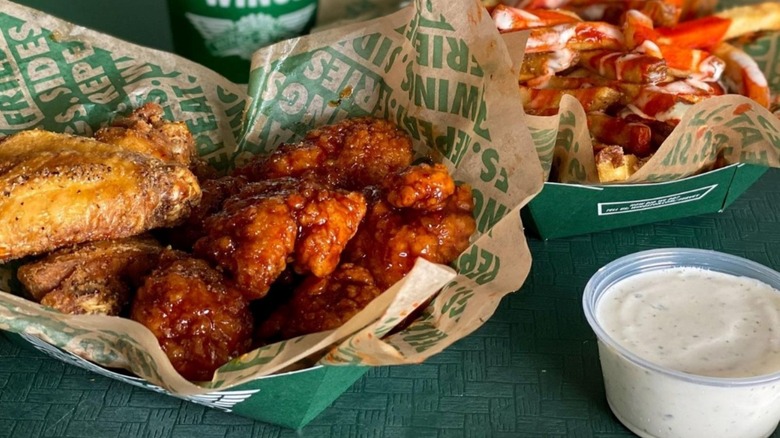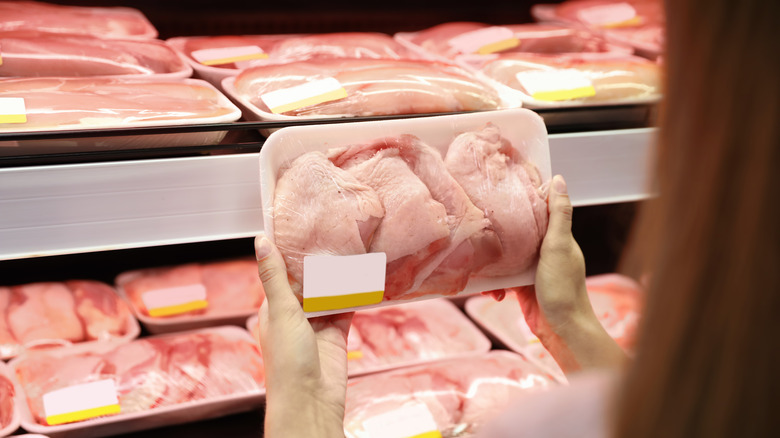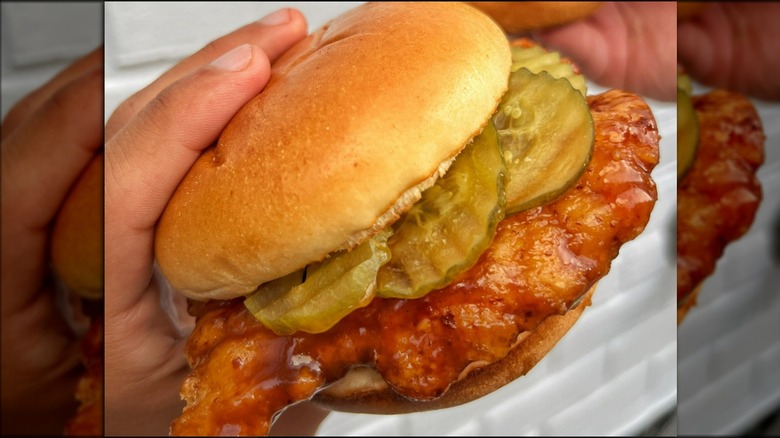How Deflation Helped Wingstop's Sales Bounce Back
The Happy Chicken Coop explains chicken was once considered a luxury, but the University of Notre Dame reports one way to drive down the price of anything is by increasing its supply. Accordingly, thanks to technological advances that made the bird cheaper to produce, it became, by the 1950s, an "affordable" protein. Of course, a lot has happened between then and now — including climate change, a pandemic-fueled labor shortage, and an outbreak of avian flu — and chicken prices have skyrocketed to the tune of 89% between 1997 and 2022 (via Official Data Foundation). Costs actually rose more steeply than even the all-items Consumer Price Index, which, itself, has seen record highs of late, according to the U.S. Bureau of Labor Statistics (via The New York Times).
Even wings — once considered a bargain cut, according to The Street's RealMoney — have experienced soaring costs in recent years (via Restaurant Business). Yahoo! reports the result is that wing prices at fast food chains have been blowing up, but one notable exception is Wingstop, which NRN reports managed to contain menu cost increases more effectively than competitors. Likely providing an assist is the fact that deflation has officially arrived, per The New York Times, signaling values are finally on their way down.
Ironically, however, deflation is also associated with decreased consumer spending. Yet Wingstop's sales, which were sluggish during Q2, per QSR, are up by almost 7% for Q3. So, could deflation be working in Wingstop's favor?
Deflation's lower prices don't necessarily translate into increased sales
In response to an extended period of exorbitant inflation, the Federal Reserve raised interest rates several times throughout the first nine months of 2022, per CNBC. When interest rates rise, money becomes more expensive to borrow. One inevitable consequence is less disposable income among consumers. This can and often does lead to an increase in consumer belt-tightening, per The New York Times.
As the demand for consumer goods decreases, so do consumer prices. That may feel like something of a relief for consumers in the immediate term; however, some businesses will inevitably suffer as a result. And when businesses suffer, the rate of unemployment increases. That has the effect of constricting consumer spending still further — even among those who remain employed. Not surprisingly, deflation is closely associated with an economic recession.
On the other hand, deflation does not affect all businesses or all individuals uniformly; for some it means a unique opportunity to shake up the game. That may, in fact, explain why Wingstop's third-quarter sales were up by 6.9%, according to NRN. Specifically, NRN cites deflation, which supported Wingstop's efforts to keep its menu prices in check, as one of several major reasons for its Q3 rebound after its sluggish second quarter. Let's take a look now at the others and how, together, they may have added up to the perfect storm for Wingstop's favorable financial results.
Wingstop added value for consumers without vastly increasing its own costs
Back in February, Wingstop's CFO, Alex Kaleida, told investors there was reason to hope that chicken wing prices would decline during the second half of 2022. According to NRN, Kaleida's optimism was apparently well-placed, which notes that deflation played a role in the restaurant chain's positive financial results. But it doesn't seem entirely fair to attribute Wingstop's impressive third-quarter sales rebound solely to macroeconomic theory. Rather, it seems likely that several notable business decisions made by the restaurant may have factored in.
First, Wingstop opted to turn some of its focus to launching a new boneless chicken sandwich; boneless chicken items are apparently less expensive to produce than bone-in wing items and may lead to bigger profit margins. Further, as it turns out, the chain's new boneless chicken sandwich has proven to be extraordinarily popular, per Restaurant Business. What was supposed to be a four-week supply ran out in a mere six days. In addition, Wingstop made the decision to ramp up its delivery reach by partnering with Uber Eats, per NRN. Previously, the restaurant had an exclusive delivery partnership with DoorDash.
Finally, Wingstop and its franchisees agreed — unanimously — to increase spending on national advertising. This decision went far in helping to promote both the new, cheaper-to-produce sandwich and the new delivery platform.


